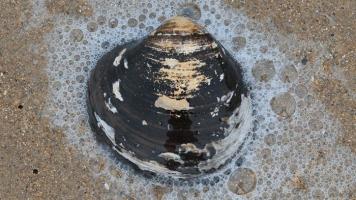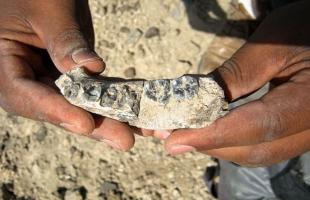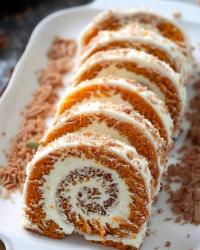Copy Link
Add to Bookmark
Report
Corbin Handbook and Catalog No. 7 Chapter 01

.he CHAPTER 1 CORBIN HANDBOOK AND CATALOG NO. 7, PAGE #
HOW DO YOU SWAGE BULLETS?
There are five different ways to swage bullets today. You can
use:
(1) A POUND DIE
(2) A RELOADING PRESS
(3) The CORBIN MITY MITE PRESS
(4) The CORBIN MEGA MITE PRESS
(5) The CORBIN HYDRO-PRESS
Each of the five methods has certain advantages. The pound die
requires no press, but instead, uses a mallet. It is somewhat lower in
cost because you do not need to purchase a press, but it is much slower
to use and doesn't produce jacketed bullets. It is ideal for swaging
large caliber lead bullets, and is often selected by replica black-
powder rifle shooters who wish to use an authentic reproduction of the
earliest form of swaging die (from the 1890's).
The reloading press system is economical since most handloaders
already own a suitable reloading press. It is limited to smaller rifle
calibers (from .257 to .224) and medium handgun calibers (from .357 to
.25 ACP) because of the inherent weakness of the slotted ram. There
are certain design restrictions imposed on this system by the press, so
it is not ideal for special work or custom calibers. Corbin makes
standard calibers and shapes only, in this system. The cost is thus
kept low for the quality. Speed is greater than the pound die but less
than the other, special swaging systems.
The Corbin Mity Mite system uses a special horizontal ram press
with more power than any reloading press built. It is much faster than
a reloading press since it ejects the bullet automatically on the back
stroke. The dies for this system, and the matching punches, do not
interchange with the reloading press system. They are made to fit into
the RAM of the press, instead of the press head. Calibers from .14 to
.458, tubing jackets with walls of up to .030-inch thickness, and
weights up to 450 grains, can all be swaged with the Mity Mite. Custom
work is done in this system.
The Corbin Mega Mite system is based on a massive machined steel
press that can handle both reloading and bullet swaging. It can accept
ANY of the Corbin dies, including those for the Hydro-press. This
ability to interchange various kinds of dies can be important to some
owners. However, there are limits to any hand-powered press. The
amount of force the Mega Mite produces is awesome, but still less than
required for certain large caliber, heavy-jacketed production work.
The Corbin Hydro-press system is the ultimate in bullet
manufacturing today. It features automatic stroke and pressure
control, electronic sensors and timing, programmable stroke control,
and many other advanced concepts that place it at the top of the list
for custom bullet firms around the world. Any caliber from 20mm cannon
to a 10 gauge shotgun slug can be swaged, in virtually unlimited weight
or style. Solid brass or copper rod can be formed instantly into
bullets of higher precision than lathe turning. Lead wire can be
extruded like toothpaste. And the press adapts easily to standard
reloading dies for the convenience of automatic sizing and seating.
Any of the various swaging systems use the principle that cold
metal will flow under sufficient pressure and take on the shape of the
vessel holding that pressure. The swage die is a very strong, highly
finished vessel for containing the pressure. You swage the bullet in
all these systems by driving a punch against the material while it is
held within the confines of the die cavity. Upward expansion from the
internal pressure created is the key factor in forming the bullets.
Reduction in diameter is called "drawing". Remember, swaging always
expands the bullet or material upward in diameter.
Drawing dies are used to reduce the diameter of an object, such as
a bullet or a piece of copper tubing or a jacket. They differ from
swaging dies, in that the drawing die has an open top and only one
punch is used. The component is pressed through the die and out the
top. In passing through a hardened constriction, it becomes smaller.
Drawing has serious restrictions when applied to finished bullets, and
can only be used for very limited amounts of reduction. But for
reforming jackets and making copper tubing into jackets, it is a
valuable tool.
If you try to put a piece of lead or a jacket into a die that has
a smaller diameter of cavity, the material will be forced down in size
and will exert a strong pressure against the sides of the die. When
the pressure is relieved, by ejecting the component, the material may
exert a certain amount of springiness, and become slightly larger than
the die cavity. In making swage dies, the die-makers have to contend
with the various amounts of spring-back in different hardnesses of
jackets, different thicknesses of jacket wall, and other factors. The
die itself is normally a different diameter from the actual finished
bullet that comes out of it.
What this means to you as a potential bullet-maker, is that you
should NEVER try to force anything into a swage die. If it won't fit
easily, don't push it in. At best, it will make the wrong diameter of
bullet. But generally, it will stick fast in the die and require
special techniques to remove. And at worst, it can generate enough
pressure to break the die!
In the following chapters, we'll discuss the various methods of
making bullets in more detail, one system at a time. Bear in mind that
there are hundreds of possible variations on the techniques, depending
on what you want to make. It would be impossible to send this manual
to you by mail if every style of bullet were to be described detail,
with each step required to make it. We have to give you the basics of
making two or three styles, and refer you to the more detailed
technical books for advanced techniques.
It is far more important for you to understand the principle
differences between lead bullet swaging, semi-wadcutter (and jacketed
wadcutter) styles of swaging, and the styles that bring the jacket into
the nose curve or ogive portion of the bullet. These three basic kinds
of bullets form the basis for everything else. If you understand how
to make them, then variations such as rebated boattails, liquid-filled
internal cavities, partitions, and other advanced designs are fairly
simple to pick up. They aren't different: they just expand a bit on
the basic techniques.



















